Cultural Class- Chinese Chess
Chinese Chess is a kind of strategic military game associated with battle affairs. In the early times, it was very popular among the aristocracy. After a long time practice, Chinese Chess was set close to the modern form at the end of Northern Song Dynasty. We organized cultural class last week and learned some basic culture behind Chinese Chess.
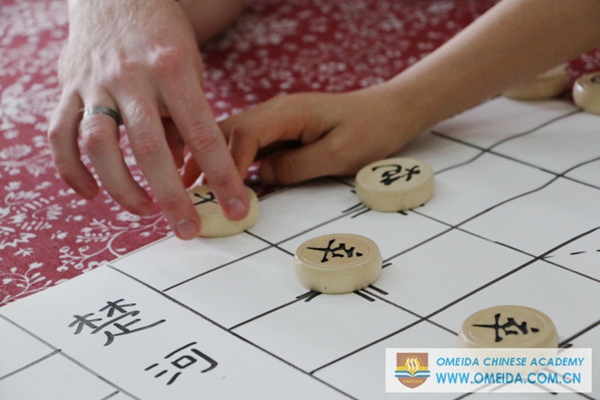
The most widely accepted saying goes that the game was invented Emperor Shun to educate his younger brother Xiang, hence the chess was named Xiangqi.
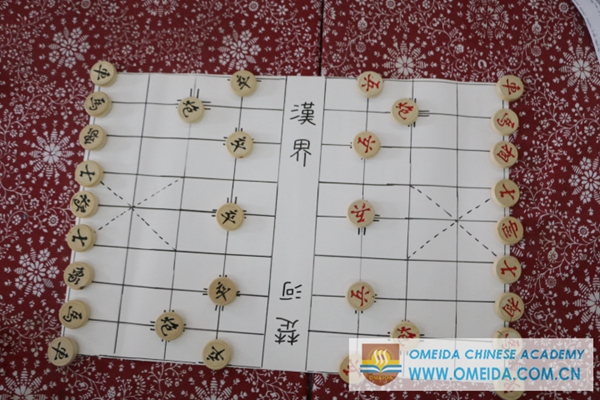
Discussing the different between in Chinese Chess and international chess with Colin.
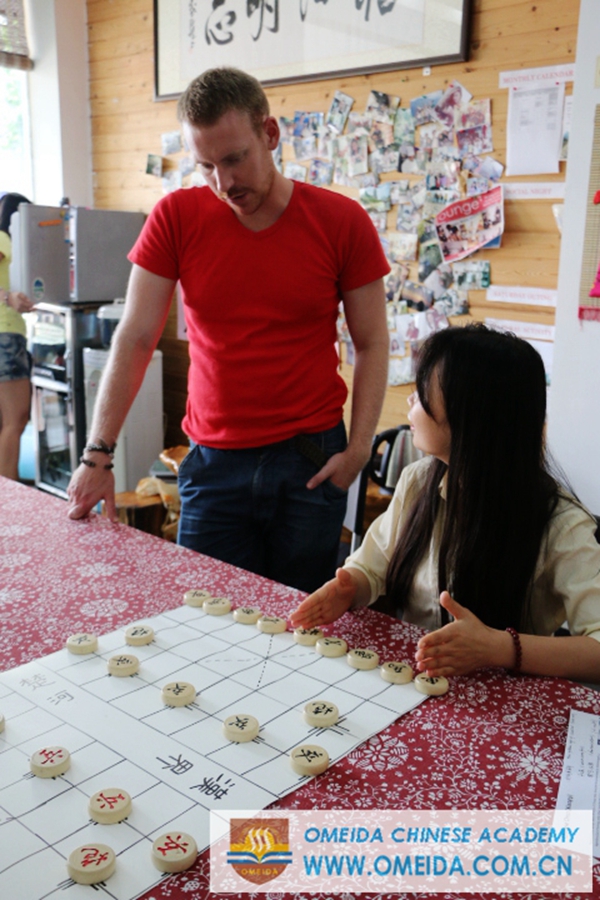
Learning some basic rules of that:
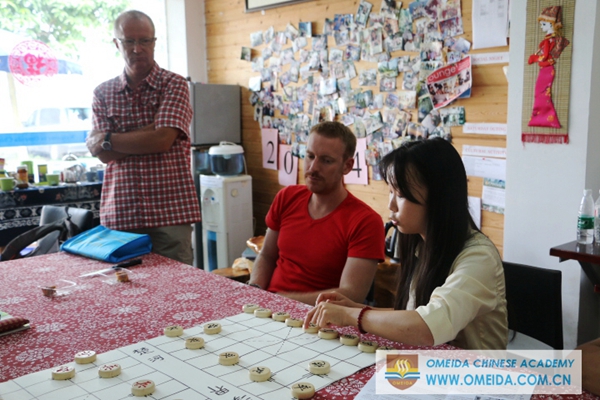
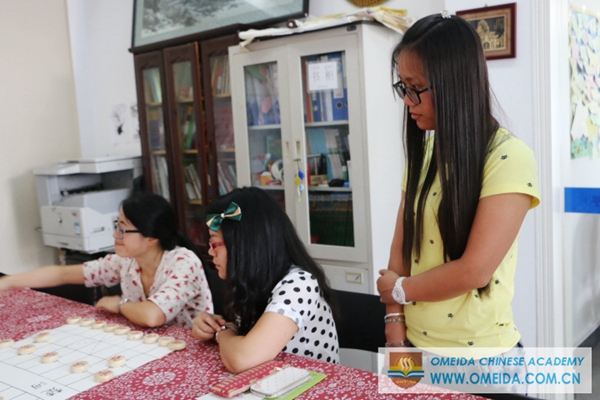
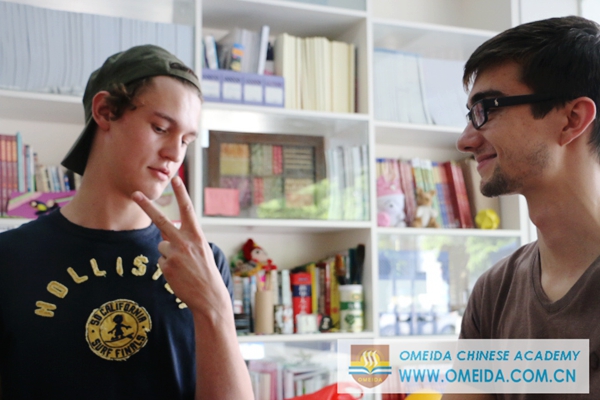

The most widely accepted saying goes that the game was invented Emperor Shun to educate his younger brother Xiang, hence the chess was named Xiangqi.

Discussing the different between in Chinese Chess and international chess with Colin.

Learning some basic rules of that:



- The King moves only one space either horizontally or vertically at a time. Furthermore, the King must always stay within the palace, which is a square marked with an X.
- The Guards move only one space at a time diagonally. Similar to the King, the guards must stay within the palace.
- The Ministers (Elephants) move two spaces at a time diagonally, for example, twp spaces left or right and two spaces up or down in a move. They must stay within their own side of the river. If there is a piece standing midway between the original and targeted position of a minister, the minister is blocked and the movement is not allowed.
- The Rooks (Cars) move one or more than one spaces horizontally or vertically if all positions between the original and targeted positions are without any block.
- The Knights (Horses) move two spaces horizontally and one space vertically or respectively two spaces vertically and one space horizontally. If there is a piece next to the horse in the horizontal or vertical direction, the horse is blocked and the movement is not allowed.
- The Cannons move one or more than one spaces horizontally or vertically like Rook. However, in a capture move, there must be exactly one non-empty space in between the original and targeted position. In a non-capture move, all spaces in between must be empty.
- The Pawns (or Soldiers) move one space at a time. If a pawn does not cross the river yet, it can only move forward vertically. Once crossing the river, the pawn can also move horizontally.
- Capture: When a piece moves to a position currently held by an opponent's piece, it captures that opponent's piece. The captured piece will be removed from the board.
- King's line of sight: The two Kings in the board must never be on the same vertical line without any pieces in between them. Any move that puts the two Kings in such a setting is illegal.
- King safety: One must never leave the King to be captured by the opponent in the next move. Any move that put the King in such a setting is illegal.
- End game condition: The game ends when one of the following situations happens:
- Checkmate: If one threatens to capture the opponent's King and the opponent has no way to resolve the threat, one wins.
Update: 09-15-2014 11:24 View:








